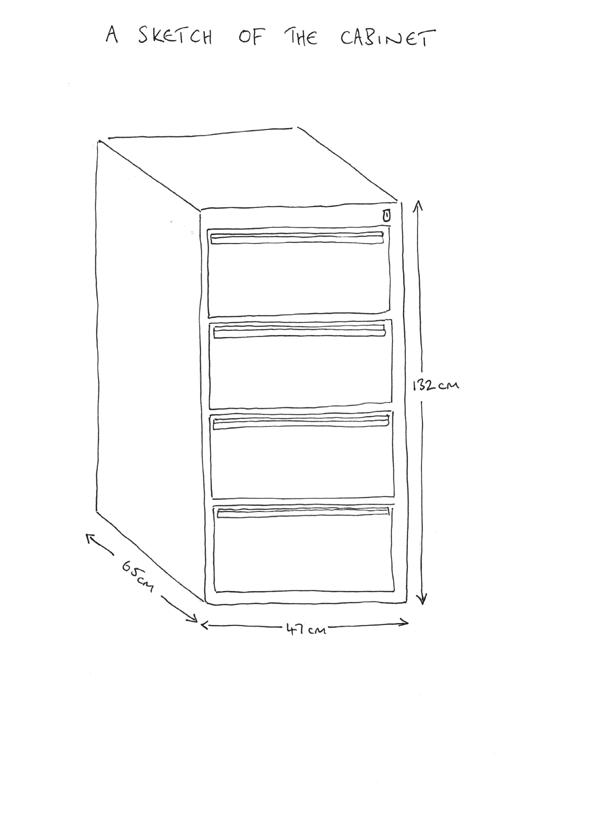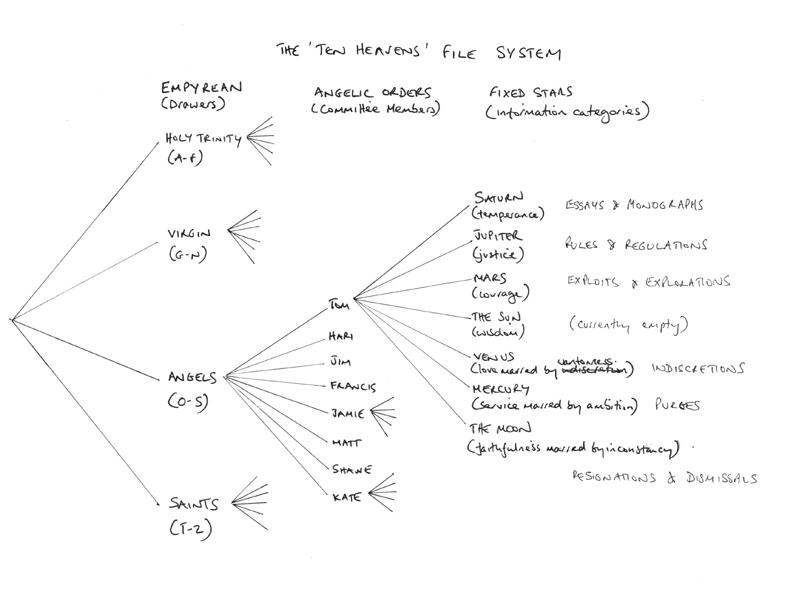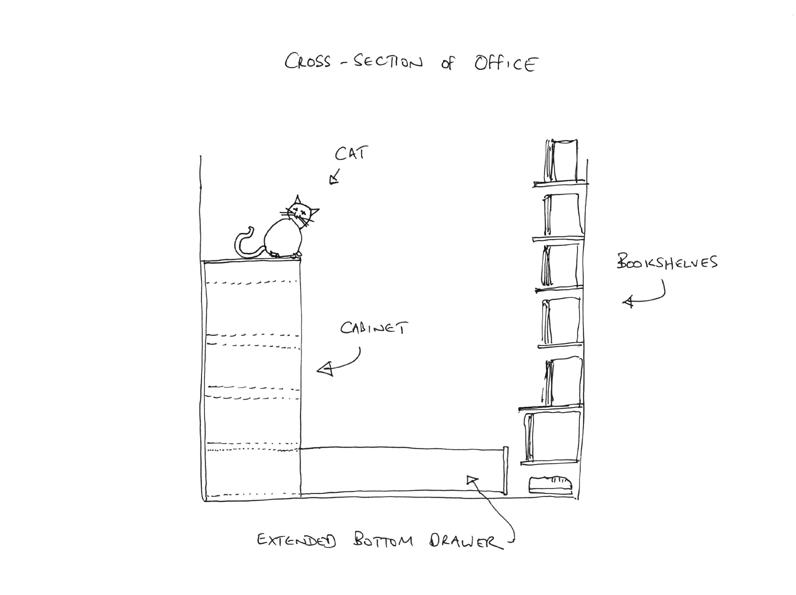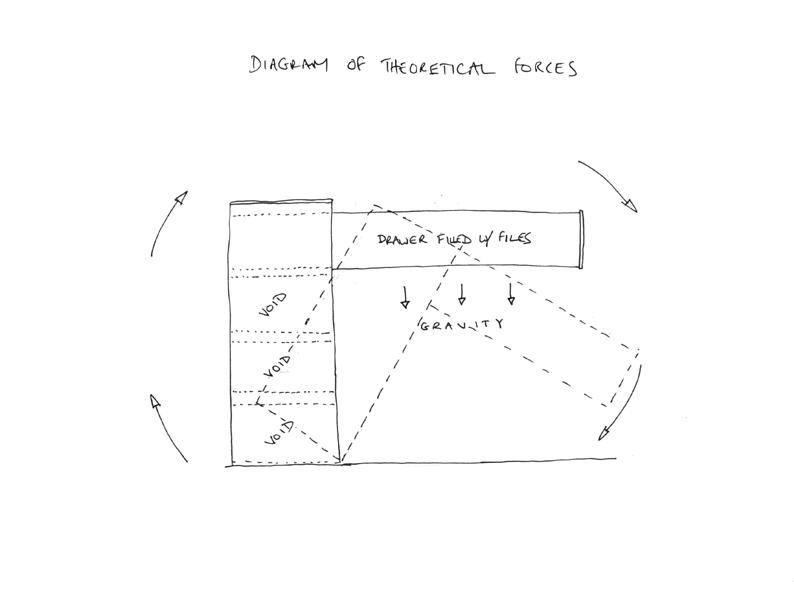Deposition
by the Data Engineer, Jim Flint
Officers of the first committee:
This is difficult for me. Any new job - any job - brings with it certain demands, any position certain responsibilities, any appointment certain exigencies. And an appointment as significant, as crammed with meaning and purpose as the International Necronautical Society's Chief Data Engineer... well, the duties obviously weigh heavier than most. So it is with a heavy heart that I have to confess to the assembled that I have not managed to fulfil the terms of my contract.
In my defence, I'd just like to say that it really wasn't my fault. There is a logic to my failure. A sequence of events led up to it, a sequence which I'd like to reconstruct for you now, a sequence over which, I think you'll agree, I had little or no control. If I had any role, in fact, it was in selecting the filing cabinet in the first place. Beyond that, I accept no responsibility. Blame must, I think, lie, with the filing cabinet, with those who sold it to me, and - utlimately - with those who appointed to the position from which I was in a position to be sold.


Slide 1: The filing cabinet
The filing cabinet was purchased on 17th April 2000 from Watt, Windsor and Loe, Mausoleums and Caskets to the Relatives of the Recently Passed, 19 Charlotte Road, Shoreditch, E1. Subsequent inquiries established that the cabinet had apparently been left in the building by the previous tenants, Watt Windsor and Loe having only recently moved there; the new occupants sold the cabinet on along with sundry items of office furniture, part of a clearout prior to complete structural renovation and refurbishment.
On initial inspection the cabinet appeared absolutely normal. It was constructed of mild steel and painted dark green. There was a small dent in the panel of the bottom drawer, apparently made by the previous owners' repeatedly kicking it closed, and kink in the right hand runner arm of the second drawer from the top which made it a little hard to open, but neither of these prevented the cabinet from functioning as filing cabinets should.
Within days I had the cabinet installed in my offices and operational; the General Secretary passed me the first batch of files. Prior to installing them I designated the four drawers of the cabinet A-F, G-N, O-S, T-Z in descending order and, having run down to Old Street to buy a box of hanging files, I allocated each letter a labelled hanging file of its own, with one exception: the letter S, knowing from experience that S always accrues more files than any other letter.
I had planned to file all INS data according to a strictly hierarchical system, based on the relationship of souls to god in Dante's Paradiso:

Slide 2: the Paradiso as filing system
See how this makes sense: each drawer corresponds to a quarter of the Empyrean, the top drawer being the Holy Trinity, the second from top theVirgin, and so on, and contains a rough quarter of the alphabetical files. Each file then contains eight subfiles, one for each Fixed Star, or committee member, thus [point]. And each of these subfiles in turn contains seven sub-sub files, organised by content: essays and monographs filed under the temperance sign of Saturn, rules and regulations under the justice sign of Jupiter and so on and so forth.
So, having set up the filing system thus, I proceeded to employ it, and it worked for well into the second week.
On the tenth day, however, something untoward happened. And I'd like you to know that this is the point beyond which I refuse to take any of the blame. Going to the cabinet in the morning as had become my habit, INS filing already my preferred way of starting the day, I pulled open the realm of the Angels. By coincidence I was intending to file the document Organisational Structure of the INS Filing System referred to above; I'd been working on it at home the previous night. But imagine my surprise when, my fingers having gone to the O file at the forefront of the drawer,I discovered that they had come to rest upon the file labelled A! Further investigation revealed that all the files from the Holy Trinity had been moved into the realm of the Angels, those from the Angels into the HolyTrinity. In addition those from the Virgin had been switched to the Saints and, correspondingly, the Saints had entered the Virgin. I decided that a prank must have been played on me, somehow, and I replaced the files in their proper order, and when I left the office at the end of the day Iocked the cabinet, using the single slightly rusted key that had come withit. But when I unlocked it the following day the files were once again rearranged, though not in the same way as before. This time they were interleaved, A N B O C P D Q and so on. Once again I rearranged them, and this time sealed the lock with superglue; the next day when I broke it open the files had again been moved.
Morning after morning the story was the same, until my entire day was taken up with rearranging the files - and soon, also, the sub files and the subsub files - that each night were being reordered in an increasingly baroque fashion. The reorderings were never random, there was always some logic to them, and after a while I began to map and record them hoping that in this way I'd discover the order with which the filing cabinet hoped to replacethe Dantesque hierarchy I'd tried to enforce upon it. A month later, I'd come up with this:


Slide 3: Cybergeography
I was pleased with myself. I felt I had the cabinet cracked. From now on I wouldn't try to impose order - I'd just chuck a file in and let the cabinet do with it what it would. Using my diagram I could trace it, should I need to find it again. But once again things weren't to prove that simple.
A week after I had my new system in place, I came into the office to find the filing cabinet empty. Or, at least, that's what I thought. I'd opened the Saints with the intention of retrieving a disposition on Sir ThomasBrowne's Urn Burial only to find it was completely empty. Wondering if the files had somehow slipped down the back of the cabinet I pulled the drawer out, and pulled, and kept pulling. But the drawer kept coming, kept coming out until it stretched all away across the room and right across to thebookshelves on the opposite wall - a distance far greater, I think you'll agree, than the length allowed by the depth of the cabinet.


Slide 4: Diagram of bottom drawer
Unnerved I pushed the drawer back in and opened the Angels, the next up.The result was the same: the drawer pulled all the way out across the room. Beginning to sweat I pushed it back in and pulled out the Virgin. Same again. Only the Holy Trinity was different: it too extended all the waya cross the width of the room, but this time it contained all of the INS files. As to their order, I didn't inquire, just shoved the drawer back in and rushed out of the room, out of the building, and down the street to sit in a cafe and gather my wits. Not only did this filing cabinet violate the rules of Euclidean space, but it also confounded gravity: in any normal situation pulling a seven foot drawer filled with heavy files out of a five foot cabinet made of mild steel would have toppled the latter, and this did not happen.


Slide 5: Diagram of forces
I have not returned to my office since. I am, however, willing to do so,even to crawl inside the extended drawers and investigate their mechanism, but only if the committee agrees that I should be:
a) Accompanied by a team of mountaineers, a documentary team, a psycho-geographer, a Tibetan monk and a Lacanian psychoanalyst b) Provided with a passport and sufficient funds to fly back from New York should I find myself spat out of thin air into a ditch by the New Jersey turnpike after a brief sojourn inside the head of John Malkovich.
I have reason to believe that it would be of value to the Society to explore the insides of this cabinet, and I would like to table a motion that I am supplied with the means to carry out this task.

![]()